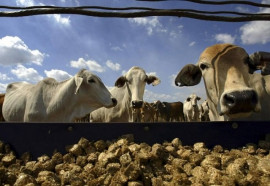
KARACHI: Pakistan has been suffering from low growth for many years now. The energy crisis is the most popularly quoted reason for this but in fact the problems that continue to hold back growth are much deeper and much more varied.
According to the recent World Bank report the constraints to Pakistan’s growth are both structural and emerging. Among the structural limitations are issues like lack of access or low access to finance and government. This stifles entrepreneurial activity and limits investment and competition as well as competiveness.
Low access to finance
This has been a long-standing constraint to growth in Pakistan and is associated partly with high intermediation costs and private sector credit that crowded out access to finance, especially for small and medium-size enterprises and women. However the report very accurately states that if high financing costs were the problem, Pakistan would have very high real interest rates, a large current account deficit, and entrepreneurs ready to invest. That has not been the case.
What really put finance out of reach for smaller enterprises and women are weak financial intermediation, high collateral requirements, and financial illiteracy. And all this happens in a context where credit to the private sector has shrunk as risk-averse commercial (scheduled) banks have turned to purchasing government bonds at attractive short-term rates to finance high fiscal deficits.
High intermediation costs, as evidenced by large and rising interest rate spreads, suggest that competition is weak and the administrative efficiency of commercial banks is poor. The State Bank of Pakistan has been trying to squeeze banks but so far the trickle-down effect in the shape of private sector credit is low at best.
Lending rates are relatively high due to commercial banks’ strong preference for holding government securities over riskier corporate debt or personal lending and a lack of other borrowing alternatives, such as a well-developed capital market.
This particularly affects small and medium-size businesses, as large corporations prefer retained earnings over expensive commercial bank loans to cover their financial needs.
According to the World Bank report further evidence that domestic financing constrains Pakistan’s growth is the lack of financial depth. Pakistan is well below average in credit availability to the private sector relative to income per capita—lower than Bangladesh, India, and Sri Lanka. Credit to the private sector declined from about 28% of GDP in fiscal 2007 to about 16% of GDP in fiscal 2012.
The report further highlighted the fact that Pakistan has the lowest private sector credit to GDP ratio and the lowest financial depth ratio (M2/GDP) among leading emerging economies. Only about 14% of the population uses financial products or services, including savings, credit, insurance, payments, and remittance services.
Many people are averse to formal borrowing, especially in poor and rural households. About three per cent of poor households borrow from financial institutions, and only 15% of farmers have access to credit through the financial system.
About 36% of the population does not engage in either formal or informal financial transactions. Such high financial exclusion not only exposes individuals and businesses to the risks of fluctuating income, but also raises their operating costs and depresses future investments.
Growth engine
Micro, small, and medium-size enterprises find it hardest to get credit. As the growth engine of Pakistan’s economy, these enterprises make up about 90%of private enterprises in the industrial sector, employ 78% of the non-agriculture labour force, and contribute more than 30% to GDP. Yet lending to these firms, at 16% of total lending, is below demand.
According to the World Bank report, the reasons include the high number of nonperforming loans in total loans (while the national average is 15.5 percent, the average for smaller firms is 40.3%); lack of an enabling legal and regulatory environment; and poor administrative capacity within small and medium-size enterprises. By preventing small entrepreneurs from financing high-return investment projects, credit constraints reduce the efficiency of resource allocation and slow job-enhancing growth.
The Pakistan Microfinance Network (2011) estimates the potential microfinance market at close to 27.5 million clients. Yet as of December 2011 total active borrowers (2.1 million) were less than a tenth that number.
Published in The Express Tribune, October 7th, 2013.
Like Business on Facebook, follow @TribuneBiz on Twitter to stay informed and join in the conversation.
COMMENTS (1)
Comments are moderated and generally will be posted if they are on-topic and not abusive.
For more information, please see our Comments FAQ















































This is what happens when you privatize all banks.......